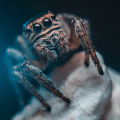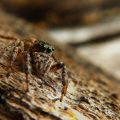Table of Contents
Keeping tarantula as pets can be a wonderful endeavor. These unique creatures are fascinating and awe-inspiring to watch, take up a relatively little space; and they are fairly easy to take care of and maintain. The best tarantulas for beginners are generally those that are ground dwellers, such as the curly hair tarantula. These spiders move more slowly that makes any necessarily handling situation easier. For more experienced exotic pet owners, and the background of other spiders; the pink toe tarantula will be your best friend.
However, beginner or not; it is always the right thing to be knowledgeable or reminded from time to time of the essential dos and don’ts for keeping charming tarantulas; and you are in the right place. Below is your ultimate guide from things you should and should not be doing when you care for these lovely types of hairy spiders.
The Dos
Secure your tarantula in a cage that is comfortable and ventilated.
For ground-dwelling tarantulas, the recommended length of their enclosures should be three times the spider’s leg’s span. Its width must be roughly double its leg span. The height only requires the same as the measure of the spider’s leg span. Thus, a 5- gallon of aquarium often works accurately and well. Do consider; that a larger tank is not necessarily the best tank, as it can burden prey more difficult to perceive.
For tree-dwelling types of tarantulas, you are also recommended an enclosure that’s three times the leg span long; and twice the leg span wide. For its height, a foot will work well. The cage must be comfortable by having branches that ought to make your tarantulas entertained by climbing and building their web. The bottom of the cage must have a layer of vermiculite that is at least 2 inches (5.08 centimeters) deep that ensures burrowing.
They do not need bright lights, and they should be kept out of direct sunlight. They also will not require you to invest in heat lamps, as most tarantulas thrive well in just room temperature. Provide cross ventilation for proper air flow that will keep your hairy spider well and healthy.
Do clean their cage as needed
Spot clean the enclosure every day as there are for sure uneaten foods, feces; and some debris your spider has left you. For full cleaning of their cage, including the change of vermiculite bedding, it can occur periodically.
Supply your tarantula with wholesome diet
Feed your tarantula a diet of nutritious crickets that is supplemented with other insects; such as meal worms, super worms, and roaches. If you have a large one, you may give pinkie mice and small lizards. Make sure the crickets are fed with nutritious foods prior to feeding them to your spider; and you might opt in dusting it with a vitamin powder. For the size of the food, it should be smaller than your spider’s body.
Feedings are best done in the evening when the spider is extra active. Inquire to your veterinarian for the advantageous quantity and variation to feed your spider; as this can differ based on age, size, and species. A small dish of fresh water should be presented at all times. It must be very shallow to preclude drowning.
Do daily mist with a chlorine free water to maintain humidity, as well as securing your tarantula to not be dehydrated.
Secure your enclosure and be cautious when handling your spider.
The biggest threat to pet tarantulas is the likelihood of them being dropped, or flying from a great height. This unfortunate scenario can lead to serious injuries, for instance a ruptured abdomen. Thus, you’ll be reminded to always keep their cage secure and be very delicate in handling them, more importantly, handle them in crucial times only.
The Don’ts
Do not feed your tarantula during its morning process.
Molting is how the spider grows to a larger size.
it is done by shedding its old exoskeleton and producing a new one. With this, you might want to put a pause on its diet because it typically will lose its appetite. Live prey can also injure your spider at this time. Also, do not handle your tarantula during the molting process. For recovery, a week to two weeks is needed before going back slowly to the old routine.
Do not overfeed your tarantula to avoid the likelihood of being overweight.
Overfeeding has been linked to also shortening their lifespan. A great way to avoid this is to restrict the portion size and stick to a feeding schedule.
Never handle a tarantula while it’s in a defensive posture.
They can perceive you as a threat, hence, bite you. It is generally perceived that handling is unnecessary, and getting bitten and haired can be stressful for owners too. Abstain to putting your tarantulas under direct sunlight and in basements where temperature fluctuates within the day. This is stressful for spiders and might cause physical and mental challenges
Finally, do not crossbreed any species with your choice for entertainment.
The crossbreeding of different species of spiders is very much not tolerated in the arachnid-keeping world, as it accompanies a range of issues and problems that stresses spiders and harms their well-being. It also holds the burden of knowing the care news, accurate behaviors as well as temperament you need to abide on.
Conclusion
Caring for tarantulas does not have to be stressful, so long as you are educated. Abide on our advice above and, surely, you’ll be having great exotic pet parenthood. Share our words to those that are in need as well!





 Author and long-time animal lover. Sharing knowledge on pet care through experience and the written word.
Author and long-time animal lover. Sharing knowledge on pet care through experience and the written word.